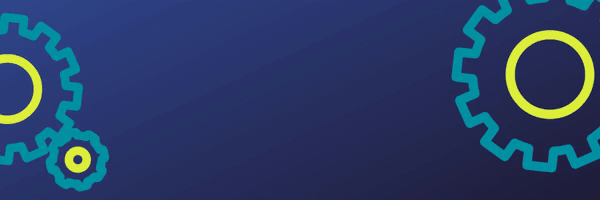What is an HRMS, what role does HRM in the construction industry play, and what are its cost drivers?
According to KPMG, less than one-third of all projects came within 10% of their budget in the last five years.
Cost overruns in construction projects are typical. But should they be? With rising material costs, a pandemic, subsequent safety concerns, and a labor shortage driving up wages for highly-skilled tradespeople, it’s more important than ever to track expenses and project data efficiently.
A quality HRM system provides every employee from project manager to laborer with the communication tools they need to navigate projects and be safe, informed, and responsive. Cloud-based communication and employee portals are replacing email and spreadsheets, and you might be wondering how these systems will affect your bottom line.
HRM in the Construction Industry: What Drives Costs?
Many HR professionals feel overworked. With a typical ratio of one HR professional to every 100 employees, it’s no wonder.
You might think your system is working, but with HR staff spending 73% of their time on administrative duties, they can’t focus on strategic roles such as recruitment, training, employee engagement, retention, and planning.
Adopting and embracing new technology can seem daunting, and your initial reaction might be to assume it will cost too much to implement and maintain.
To help you assess the actual value of an HRM system in the construction industry, we’ll highlight the standard cost drivers in construction HRM and provide strategies and support that you can implement from the start of your projects.
What is an HRMS?
An HRMS (Human Resources Management System) is a suite of software applications that perform HR tasks and processes ordinarily managed by HR staff. The benefits of an automated system are twofold:
- HR staff can focus on the essential parts of their jobs, like hiring and onboarding employees.
- Tasks that would typically require emails back and forth are taken care of automatically.
In the construction industry, an HRMS allows companies to hire, onboard, train, and interact with their workforce throughout their employee lifecycle and stay compliant with changing tax and labor regulations.
The ability to consolidate disparate systems and build interconnected workspace benefits assists a construction company that works on multiple projects in different locations.
What are the Pricing Models?
Businesses spend $8,750 on average per user for their HRMS system over five years.
What you’ll pay for an HRMS depends on your business needs. If you’re a small company that doesn’t want a considerable outlay initially, you might benefit from a subscription model. There are other reasons a licensing model doesn’t suit small and mid-sized businesses that we’ll explore below.
Larger companies might prefer total control over their data and have more room on-site for servers that host an HRMS. So which is the best option?
Subscription
A subscription model often costs less upfront and makes more sense for a small to medium-sized business. A vendor hosts the software on their servers, and companies pay a monthly or annual subscription fee. The structure is usually per employee, per month, and some vendors use pricing tiers instead.
While HRMS vendors can keep costs down due to low maintenance costs, their packages are often fixed, meaning less customization.
Licensing
With a licensing model, the company pays for the software upfront and hosts the data on its servers. You might pay more initially, but once you buy it, it’s yours.
Large businesses with complex needs and many moving parts might benefit from a licensing model with more control over the system, date, and customization.
Recurring costs might include maintenance or support.
HRMS Implementation
You might be hoping for plug-and-play, but there are factors to consider when implementing your HRMS for construction projects.
Whether you go for licensing or a subscription model, you need to know exactly how much it will cost to implement the software, which takes planning. Just like a construction project, you’ll need to prove the value of the HRMS.
- What are the initial costs?
- What are the projected costs?
- What benefits will you get from the system?
- What are the projected savings over 2, 5, or 10 years?
- Will you need to customize the system to make the most out of it?
The initial investment will be worth it with benefits such as reduced overheads, more efficient HR services, and clear communication.
Transient workers can use the system the same as full-time employees, and you will attract younger workers to the profession if they see that you’re embracing technology.
System Features
With cloud-based services, you have no hardware costs and a range of options available on the market.
With on-premise HRMS, you have more customization and control.
Either way, the more your HRMS does, the more it will cost. Some vendors offer basic to ultimate packages with increasing functionality, so what do you need for your construction projects?
The basics include an employee portal, legal compliance, contracts, payroll, benefits management, and recruitment. Larger companies might need more features and functionality, and the efficiency of the HR process is the most significant benefit of an HRMS.
You can decide the features you need to mobilize your workforce, make the most out of the system, and determine how much it will cost.
Training Your HR Staff
A new system might be daunting for your HR staff. They might be used to doing things a certain way, using less technological systems, and might even be fearful of losing their job.
But your return on investment is dependent on your staff using the system correctly. An HRMS will cost more in the long run if your team doesn't utilize the full functionality. It’s not on your staff to figure out how to use the system effectively; it’s on your company to train them properly.
Employees will be frustrated if they can’t use the system and might let processes slip. Younger workers who expect systems to run smoothly and quickly will become disinterested.
Factor the cost of training into implementation. With a cloud-based system, training can be online, saving on face-to-face training costs. A well-trained HR department and engaged workers drive your projects forward.
Total Cost of Ownership
What you pay at the point of purchase is a small part of the picture. The figure that matters is how much the system will cost over the period you’re using it.
Firstly, the upfront cost of the monthly subscription or the license, plus upgrading and maintenance projections. Then you factor in the price of installation. For a subscription service, it’s easier, but you still need to pay for data cleansing and migration.
Updates and maintenance incur labor costs, internal and external, and then there’s training staff to use the system. On-site and face-to-face training mean training materials, and in-person or online training implies every member of staff needs to take time away from their jobs.
Return on Investment
Budget-holding stakeholders will need proof that the expense of an HRMS is worth it to implement new technology into the construction industry. If the promise of an HRMS is greater functionality and increased efficiency, how do you measure them?
With an employee portal, self-service should save time, allowing employees to manage their information, requests, and booking time off. This leads to better engagement and less pressure on HR staff, freeing up their time to focus on critical tasks.
Better communication between workers and management leads to trust and a happier workforce, especially younger workers.
Your transient workforce should also benefit from a streamlined hiring process.
You must assign a cost value for these benefits and decide if you’re providing a better HR service than you were before. Collect the relevant data before using an HRMS and use it as a baseline. It will be essential to have targets and agree on improvements in each metric with stakeholders.
Hidden Costs
Failing to plan in the construction industry will lead to overruns and blown budgets. It’s the same for the implementation of an HRMS. You can estimate costs but expect them to change.
Don’t go overboard on features. Get what you need and implement features that add functionality or simplify processes. Talking to your HR staff will give you a better picture. You also need to work closely with departments that an HRMS will affect, like IT and accounting.
The Next Step
People are your most valuable asset. Industrial Skilled Trades are construction industry specialists who focus on screening, interviewing, placement, and onboarding skilled tradespeople.
Taking some of the stress from HR professionals allows them to focus on employee relations. Our proactive recruiting processes ensure you’ll always have tradespeople you can rely on throughout your project.

.jpeg)
-1.jpg)
